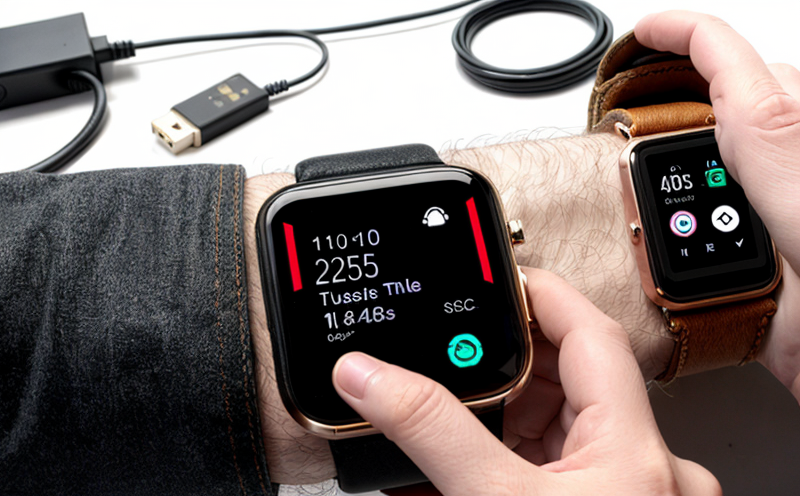ISO 14184 Formaldehyde Testing for Wearable Textile Components
The ISO 14184 standard is crucial in ensuring that textiles used in wearable electronics do not release harmful levels of formaldehyde, a known carcinogen. This test is particularly important as many modern wearables incorporate fabric components that are directly in contact with the skin.
In this service, we utilize advanced analytical techniques to ensure compliance with ISO 14184:2009 which specifies methods for determining formaldehyde release from textile materials. The testing process involves extracting formaldehyde from textiles using a specified buffer solution and measuring it via spectrophotometric analysis.
The specimen preparation is critical. Fabric samples are cut to standardized sizes and shapes, ensuring that the test results are accurate and consistent. Once prepared, these samples undergo extraction in a controlled environment for up to 24 hours, allowing sufficient time for formaldehyde release. After extraction, the solutions are analyzed using high-performance liquid chromatography (HPLC) or gas chromatography-mass spectrometry (GC-MS), methods that provide precise quantification.
The results of this testing help manufacturers meet stringent regulatory requirements and ensure product safety. Compliance with ISO 14184 is a legal requirement in many countries, particularly those with strict consumer protection laws. This service not only ensures compliance but also enhances brand reputation by demonstrating a commitment to producing safe products.
The importance of this test cannot be overstated, especially given the increasing popularity of wearable electronics such as smartwatches and fitness trackers that come into direct contact with skin for extended periods. Formaldehyde exposure can lead to various health issues including dermatitis, respiratory problems, and even cancer. By adhering to ISO 14184 standards, we help manufacturers mitigate these risks.
In summary, our ISO 14184 testing service ensures that wearable textile components are safe for consumer use by rigorously measuring formaldehyde release. This process is a vital part of the quality assurance and regulatory compliance framework for companies in this sector.
Why It Matters
The safety of textiles used in wearable electronics is paramount, especially given their direct contact with human skin. The formaldehyde test ensures that these materials do not release harmful levels of formaldehyde during use. This is critical for protecting consumer health and ensuring compliance with international standards.
- Compliance with ISO 14184:2009 enhances brand reputation by demonstrating a commitment to product safety.
- Avoids potential legal issues stemming from non-compliance, which can lead to costly recalls and damage to the brand's image.
- Reduces risk of adverse health effects for consumers, enhancing overall consumer satisfaction.
The formaldehyde test is part of a broader quality assurance process that also includes chemical resistance tests, colorfastness testing, and durability assessments. Together, these tests ensure that wearable electronics are not only safe but also durable and aesthetically pleasing.
Industry Applications
The ISO 14184 formaldehyde test is widely used across various segments of the electronics industry, particularly in sectors that produce wearable devices. This includes smartwatches, fitness trackers, and other health monitoring wearables.
In these applications, textiles are often integrated into the design to provide comfort and a sleek appearance. However, the direct contact between the skin and the textile can pose health risks if formaldehyde is released in excess amounts. Our testing ensures that these textiles meet stringent safety standards.
Our service also caters to companies involved in the manufacturing of accessories such as straps for watches or fitness bands. These components, though often small, are still subject to rigorous testing due to their direct skin contact. By adhering to ISO 14184, manufacturers can ensure that these accessories contribute positively to the overall safety profile of wearable electronics.
Additionally, our service supports companies in developing new products or improving existing ones by providing detailed reports on formaldehyde release. This information is invaluable for R&D teams working on innovative materials and designs.





